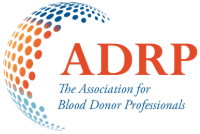Can whole blood donors help alleviate platelet shortages?
Abstract
How are platelets collected? In the U.S., most platelets for transfusion are collected by apheresis, meaning that blood centers must retain apheresis donors or convert whole blood donors to apheresis donors to keep up with the high demand for platelet products. Many blood centers have struggled to meet this demand, largely due to the “aging out” of dedicated apheresis donors. Additionally, apheresis procedures are lengthy, limiting the number of donations per day. Supplementing the apheresis supply with whole blood-derived platelets (WBDPs) has been proposed as a method to mitigate platelet shortages. According to the National Blood Collection and Utilization Survey (NBCUS), in 2021, a total of 9.8 million units of whole blood were collected. Of these whole blood collections, 23% (2.25 million) were processed within 8 hours — the FDA-mandated processing time limit — to make cryoprecipitate. Assuming the same number of whole blood units could be processed within 8 hours to produce WBDP, and assuming that 5 intermediate platelet units are pooled to create one transfusable dose, production of WBDP could create an additional 450,000 platelet doses per year. Based on the national average split rate of 2.2 platelet products per procedure, this is equivalent to the number of platelet doses obtained from approximately 205,000 apheresis donations. Although many blood centers have moved away from producing WBDPs, recruitment of apheresis donors can be challenging. Whole blood donations are more convenient for donors, and WBDPs can potentially alleviate pressure on blood centers by providing supplemental platelets for transfusion.
Thank you to TerumoBCT for providing this resource.
June 24, 2025
Related Resources
Engaging blood donors as advocates Social media preferences and associations with marketing
Background: Various critical medical procedures would become impossible without blood donations—saving lives in emergencies, surgeries, and chronic conditions like thalassemia. Therefore, it seems crucial to enhance donor recruitment and ensure…
Rethinking the role of older donors in a sustainable blood supply
INTRODUCTION Many countries, particularly high human development index countries, are facing the challenge of an aging population.1 For Blood Collection Agencies (BCAs) in these countries, an aging population poses two…


